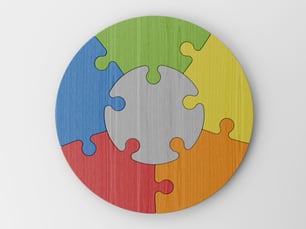 Without argument, one of the most important elements of a successful product development strategy is having a blueprint for success. Both in theory and quite literally, product development teams need to have a clear plan in place - something that specifies their project requirements and timelines throughout the process.
Without argument, one of the most important elements of a successful product development strategy is having a blueprint for success. Both in theory and quite literally, product development teams need to have a clear plan in place - something that specifies their project requirements and timelines throughout the process.
While many teams do a good job of this (here is a free template if you need some guidance) they often commit a common mistake - their plan doesn’t evolve.
The Evolution of Your Plan
From the very beginning of the product development process, back during the initial conceptualization, to the final design phase of the product, changes will occur. This isn’t due to poor planning by the product manager or lackluster design by the product designer, but rather, it is because of the natural insights discovered during this journey.
Testing or experimenting with a product will reveal what does and doesn’t work - and may disprove initial assumptions about costs, value, and features in the process. And, on top of that, for those looking to bring a consumer product to market, your consumer insights can change between the time of product conceptualization and design.
Consumer Insights Play a Huge Role
The needs of your customer are typically defined early on, which plays an important role in your conceptualization and design phases. However, thoughts on customers’ needs can evolve over time, as many of these initial beliefs were based on current market offerings, or at least influenced by them. For example, conducting a focus group early on can be a valuable step to take, but some of the consumer insights you receive may be influenced by current products available to them.
A great visual of this is if you are trying to launch a new smartwatch or fitness band - most of the thoughts of your consumers will be influenced by current products available to them, like the Samsung Gear or Apple Watch. This can make getting clear needs early on a challenge.
Aside from changing (or more clear) consumer insights, the requirements of a product may naturally change as you meet with potential manufacturing partners and you learn about the cost involved in producing the product. If a feature you initially assumed was low-cost and important to the consumer turns out to be expensive and unimportant, for example, you may alter your design and requirements.
Be Flexible, Be Agile
One of the biggest mistakes a product development team can make is not adjusting their plan as the process moves along. Remember, product development is a complex process, but the initial plan should be thought of as a hypothesis that is always being adapted based on new information.
Of course, it is vital to have a firm plan in place when you enter the manufacturing stage, but prior to that, product managers and their teams need to stay agile and flexible - you never know what could change.



